Part 22: January 7 Broadcast

You are listening to BBC radio 4. In an hour, we’ll be discussing journalism and its effects on violence. For the next hour, Professor David Stephenson will be presenting a documentary on the second 80 years war of the eighteenth century. This series will be running every third day, up to 50 episodes. If you want news of the current war in the Middle East please channel in to BBC radio 1.
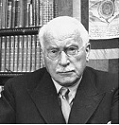 Good evening, and welcome to BBC radio 4. I’m Professor David Stephenson, professor of Dutch historical studies at Cambridge. This is the twenty-second part of our 50 episode special on the second 80 years war over Europe. Joining me for these broadcasts are fellow researchers and scholars Doctor Albert Andrews, specialist in German studies from the Berlin academy, Professor Robert Lowe, specialist in French studies at Cambridge, and a graduate student and technical assistant, Anton Thatcher. Last week, we discussed the fall of both great Empires of India as they made way to the Dutch.
Good evening, and welcome to BBC radio 4. I’m Professor David Stephenson, professor of Dutch historical studies at Cambridge. This is the twenty-second part of our 50 episode special on the second 80 years war over Europe. Joining me for these broadcasts are fellow researchers and scholars Doctor Albert Andrews, specialist in German studies from the Berlin academy, Professor Robert Lowe, specialist in French studies at Cambridge, and a graduate student and technical assistant, Anton Thatcher. Last week, we discussed the fall of both great Empires of India as they made way to the Dutch. Back near a decade, where the Dutch had yet to conquer India, they were still one of the major presences in America. In slight trouble against the masses of British soldiers who had been mass recruited along the East Coast of North America, the Dutch had to dig in and hope for reinforcements. The Dutch government in Amsterdam, excited by the prospect of an invasion of Britain when forces had finished the Maratha, had sent repeated dispatches saying no additional funds or forces would be available, only to be inundated with ever more counter correspondence requesting more men.
Back near a decade, where the Dutch had yet to conquer India, they were still one of the major presences in America. In slight trouble against the masses of British soldiers who had been mass recruited along the East Coast of North America, the Dutch had to dig in and hope for reinforcements. The Dutch government in Amsterdam, excited by the prospect of an invasion of Britain when forces had finished the Maratha, had sent repeated dispatches saying no additional funds or forces would be available, only to be inundated with ever more counter correspondence requesting more men.
Dutch in the Americas had been forced to recruit hundreds of natives as musket men. It is debated as to whether the native auxiliaries invented skirmish doctrine or if the riflemen in India had in the V.O.C.
 With the British to the North, the Iroquois along their western flank, the Dutch would have to separate into two sections both pushing north to prevent their forces from being surrounded or their supply lines cut behind them. While some battalions were disciplined and experienced enough to run themselves, the high command had instead opted to form more high ranking officers and their staff. There were three times as many officers in America as there were in India, and almost twice as many as there were in Europe.
With the British to the North, the Iroquois along their western flank, the Dutch would have to separate into two sections both pushing north to prevent their forces from being surrounded or their supply lines cut behind them. While some battalions were disciplined and experienced enough to run themselves, the high command had instead opted to form more high ranking officers and their staff. There were three times as many officers in America as there were in India, and almost twice as many as there were in Europe.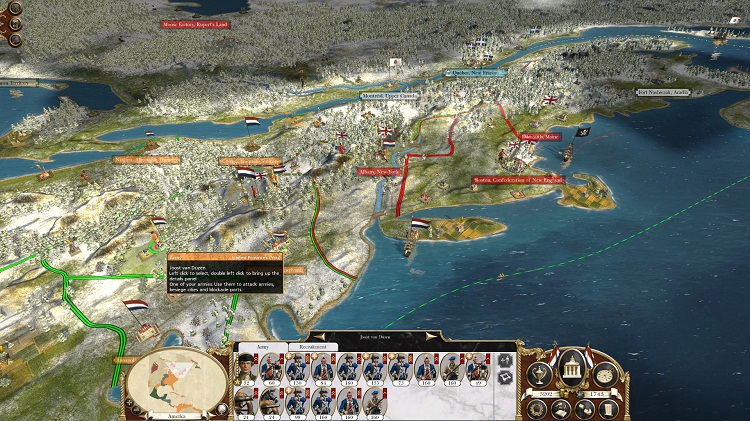
Each of the three main Dutch armies in the Americas had a full ranked general, which was relatively unique to a single theater of a war at the time.
 In 1734, the British in North America were holding back the Dutch strongly from Virginia and a second strong army just behind in Maryland. To make matters worse, Dutch ships had caught other armies near Boston and New York, another heading west towards Kentucky, and Iroquois all through the wilds around the great lakes. The Dutch were formed up just south concentrated along the east, hoping to counter attack the British from Virginia, assuming the British would attack, and that they would suffer horrendous casualties and lose the battle.
In 1734, the British in North America were holding back the Dutch strongly from Virginia and a second strong army just behind in Maryland. To make matters worse, Dutch ships had caught other armies near Boston and New York, another heading west towards Kentucky, and Iroquois all through the wilds around the great lakes. The Dutch were formed up just south concentrated along the east, hoping to counter attack the British from Virginia, assuming the British would attack, and that they would suffer horrendous casualties and lose the battle. That optimistic thinking wasn’t entirely unrealistic. Unless you could muster tremendous lengths of time, or held a massive military advantage, a siege assault would almost invariably end with the destruction of the reckless attackers. In this situation, the British had lost vast amounts of land, and a tremendous amount of public support back in Britain.
That optimistic thinking wasn’t entirely unrealistic. Unless you could muster tremendous lengths of time, or held a massive military advantage, a siege assault would almost invariably end with the destruction of the reckless attackers. In this situation, the British had lost vast amounts of land, and a tremendous amount of public support back in Britain.  Of course, the very notion of the British attempting this until they could move their more Northern forces South to overwhelm the Dutch was a pipe dream. But the Dutch wouldn’t need the British to make the mistake of an assault, as another distraction would seal the fate of the British in north America. In 1735, the Portuguese, the Dutch allies had landed in the northernmost regions of North America, catching the British from behind. Forced to pull forces from New York and Main to defend against potential Portuguese aggression, the British found themselves unable to focus their forces against the Dutch.
Of course, the very notion of the British attempting this until they could move their more Northern forces South to overwhelm the Dutch was a pipe dream. But the Dutch wouldn’t need the British to make the mistake of an assault, as another distraction would seal the fate of the British in north America. In 1735, the Portuguese, the Dutch allies had landed in the northernmost regions of North America, catching the British from behind. Forced to pull forces from New York and Main to defend against potential Portuguese aggression, the British found themselves unable to focus their forces against the Dutch.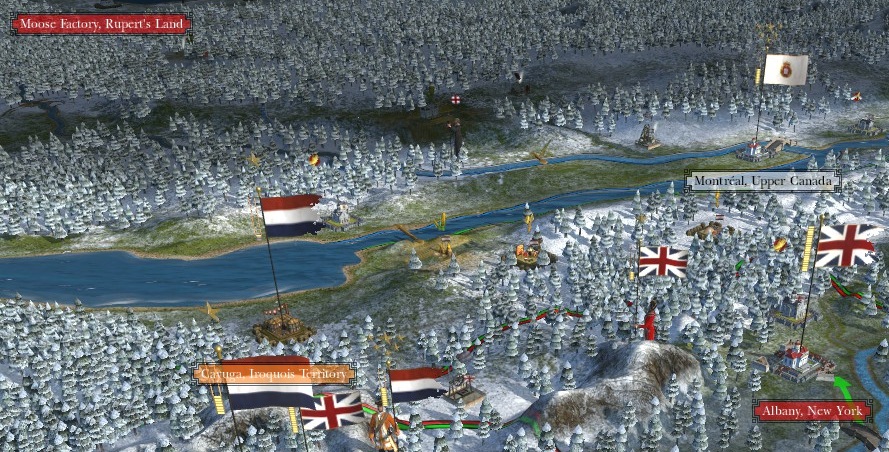
The Portuguese menacing the British from the North.
 This was the opening the Dutch needed. The Dutch had tried in vain for years to get the nations of the Western Atlantic Federation that did not have puppet governments to assist in the attacks against Britain, with the Portuguese more interested in maintaining their territory in Italy, and Hannover far too weak to contribute when they were being directly menaced by Sweden, they had no luck in enticing either into assisting until early 1730. Even when it happened, the Dutch had been surprised.
This was the opening the Dutch needed. The Dutch had tried in vain for years to get the nations of the Western Atlantic Federation that did not have puppet governments to assist in the attacks against Britain, with the Portuguese more interested in maintaining their territory in Italy, and Hannover far too weak to contribute when they were being directly menaced by Sweden, they had no luck in enticing either into assisting until early 1730. Even when it happened, the Dutch had been surprised. The territories the Portuguese had actually taken were not technically British. They were held by native tribes that were allied with the British. Having avoided war with Britain itself, the Portuguese were a presence that watched and waited. Had Britain moved all their forces south despite Portuguese armies just north of them, the Portuguese would have certainly attacked. Instead, Britain split their forces, attempting to fight a two front war.
The territories the Portuguese had actually taken were not technically British. They were held by native tribes that were allied with the British. Having avoided war with Britain itself, the Portuguese were a presence that watched and waited. Had Britain moved all their forces south despite Portuguese armies just north of them, the Portuguese would have certainly attacked. Instead, Britain split their forces, attempting to fight a two front war. Seizing the moment, the Dutch moved two armies straight to Virginia. While both stopped to fight and destroy the large British garrison in Williamsburg, Vrooman would continue onward as fast as possible to Philadelphia. Williamsburg had no fortifications, and their army base was set near many hills and cliffs. The rough terrain had essentially forced the British to force their forces to a low and high ground contingent to try to counter the Dutch on either side for long enough for their forces to focus into a single area. Alternatively, as the Dutch were invading two armies, the Dutch could potentially attack from the low and high ground, and necessitate the British defending along both ends.
Seizing the moment, the Dutch moved two armies straight to Virginia. While both stopped to fight and destroy the large British garrison in Williamsburg, Vrooman would continue onward as fast as possible to Philadelphia. Williamsburg had no fortifications, and their army base was set near many hills and cliffs. The rough terrain had essentially forced the British to force their forces to a low and high ground contingent to try to counter the Dutch on either side for long enough for their forces to focus into a single area. Alternatively, as the Dutch were invading two armies, the Dutch could potentially attack from the low and high ground, and necessitate the British defending along both ends.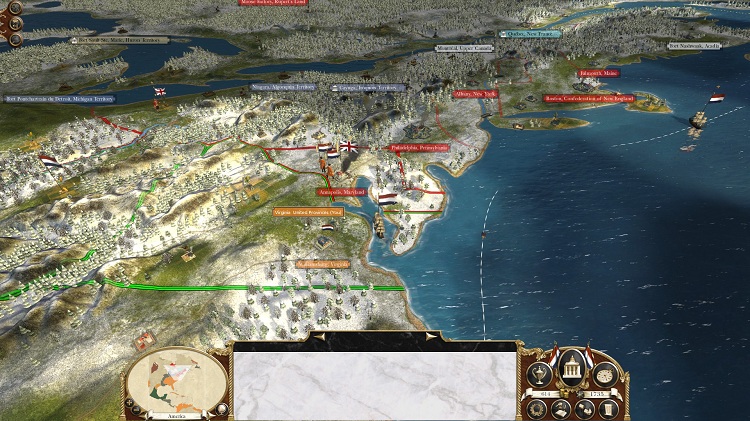
The Dutch focused their armies, but separated one group into an advancing force and the other would remain as a consolidating force.
 Dutch forces, hoping to advance all the way to Philadelphia before season’s end wanted to end the battle quickly and decisively. They didn’t wait for the British in Virginia to starve, sally forth or surrender and instead deployed immediately for battle. Their forces were arrayed in a long line taking the high ground, hoping to wrap around the British right flank as the line moved to fire from the high to the low ground.
Dutch forces, hoping to advance all the way to Philadelphia before season’s end wanted to end the battle quickly and decisively. They didn’t wait for the British in Virginia to starve, sally forth or surrender and instead deployed immediately for battle. Their forces were arrayed in a long line taking the high ground, hoping to wrap around the British right flank as the line moved to fire from the high to the low ground.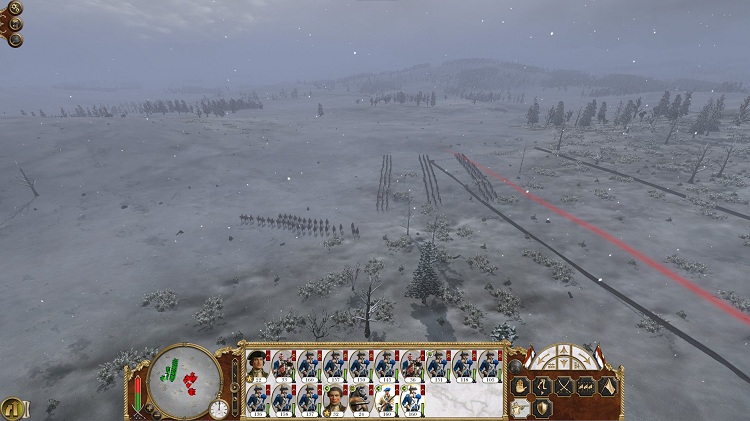
The British trying to redeploy in the snow around Virginia.
 High ground didn’t make as much difference as it had in past. High and low ground accounted for a significant advantage for a melee force, where the momentum could overbear and destroy a low ground defender, and arrows arching downward could gain more distance and range compared to those fired upward. Bullets however fired much as they would over flat ground, but the Dutch preferred the high ground regardless. By taking the high ground, it guaranteed that the British would take far more casualties and loss if they decided to commit to a charge, or if the Dutch wished to deliver the finishing blow in melee, it would amount to something.
High ground didn’t make as much difference as it had in past. High and low ground accounted for a significant advantage for a melee force, where the momentum could overbear and destroy a low ground defender, and arrows arching downward could gain more distance and range compared to those fired upward. Bullets however fired much as they would over flat ground, but the Dutch preferred the high ground regardless. By taking the high ground, it guaranteed that the British would take far more casualties and loss if they decided to commit to a charge, or if the Dutch wished to deliver the finishing blow in melee, it would amount to something.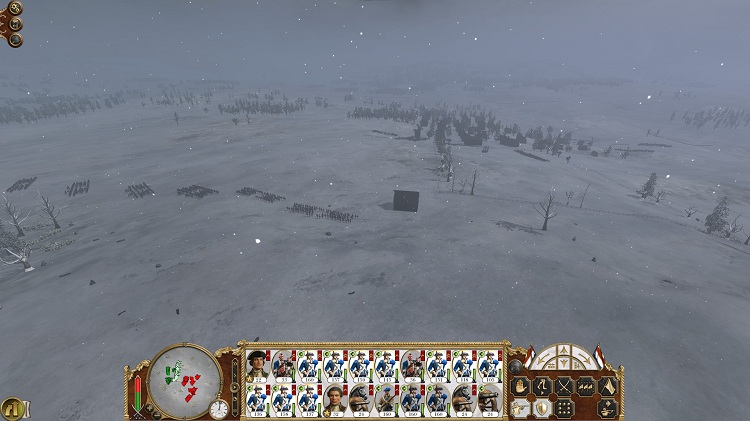
The Dutch advancing towards the lip of the high ground around the British forces.
 The British, seeing the full deployment of the Dutch lines on their right flank, moved their entire force down the hill. Trying to struggle up it with the Dutch forces so close would have only allowed the Dutch the opportunity to hit each section of their forces piece by piece. With the Dutch already outnumbering the British forces, that was not an option they could afford to take.
The British, seeing the full deployment of the Dutch lines on their right flank, moved their entire force down the hill. Trying to struggle up it with the Dutch forces so close would have only allowed the Dutch the opportunity to hit each section of their forces piece by piece. With the Dutch already outnumbering the British forces, that was not an option they could afford to take.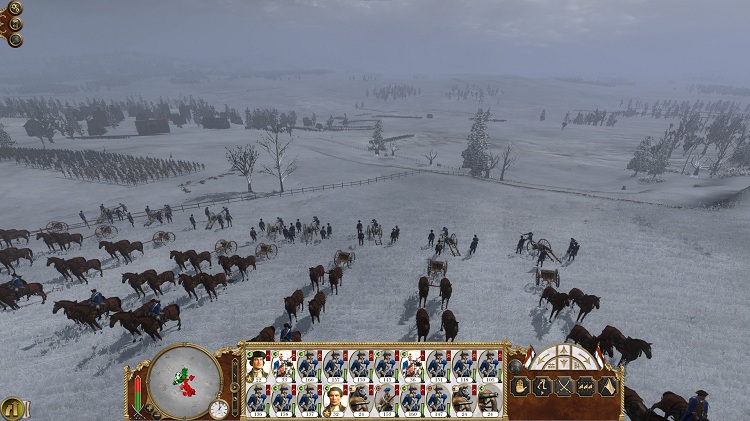
The Dutch watching the British re-forming their lines below the hill.
 Defensive stakes had been scattered across the battlefield by the defending British, making it difficult for the Dutch cavalry to maneuver about the field. Instead, the battle would be fought exclusively by the infantry. The cannons the Dutch had brought with them were of little use over the rough terrain, with the majority of the munitions burying themselves in hills before they could come in contact with the men behind them. Fortunately, the British army was itself almost entirely infantry as well, leaving the Dutch little to fear in terms of a sudden cavalry flank assault, or attrition due to artillery fire.
Defensive stakes had been scattered across the battlefield by the defending British, making it difficult for the Dutch cavalry to maneuver about the field. Instead, the battle would be fought exclusively by the infantry. The cannons the Dutch had brought with them were of little use over the rough terrain, with the majority of the munitions burying themselves in hills before they could come in contact with the men behind them. Fortunately, the British army was itself almost entirely infantry as well, leaving the Dutch little to fear in terms of a sudden cavalry flank assault, or attrition due to artillery fire.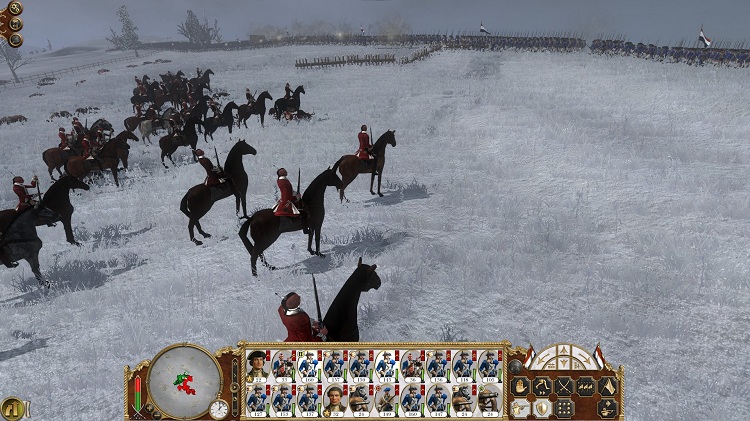
British forces could not charge past the wooden stakes which had been deployed to fend off the Dutch. As all of the British cavalry was armed with muskets, they were not held at a significant advantage.
 The rapidly advancing Dutch managed to cut off and tie down the extreme right of the British line forcing several battalions into a defensive position around the buildings of their military base, lowering the amount of fire the Dutch could surround them with. Their cavalry, hoping to stem the Dutch left flank to cover a retreat charged forward, but were unable to tie up any infantry as the Dutch and British engaged in a general fire fight.
The rapidly advancing Dutch managed to cut off and tie down the extreme right of the British line forcing several battalions into a defensive position around the buildings of their military base, lowering the amount of fire the Dutch could surround them with. Their cavalry, hoping to stem the Dutch left flank to cover a retreat charged forward, but were unable to tie up any infantry as the Dutch and British engaged in a general fire fight.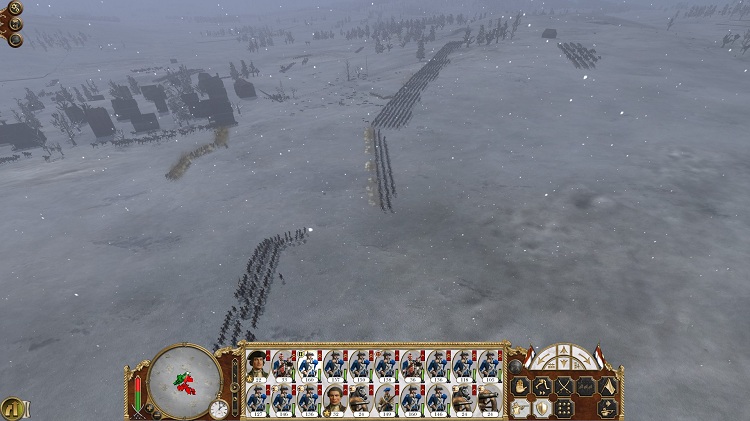
The extreme British right is caught by the Dutch, forced into a fire fight.
 The Dutch, able to concentrate their forces on small British detachment that lagged behind, quickly set up a thick, five to seven man deep formation facing down the hill at the British below, while simultaneously moving their artillery to a commanding position overlooking the British. The British, reorganized, began to create a line opposite the Dutch, moving forward hoping to use the men that had been caught behind as the anchor to their right flank for a while.
The Dutch, able to concentrate their forces on small British detachment that lagged behind, quickly set up a thick, five to seven man deep formation facing down the hill at the British below, while simultaneously moving their artillery to a commanding position overlooking the British. The British, reorganized, began to create a line opposite the Dutch, moving forward hoping to use the men that had been caught behind as the anchor to their right flank for a while.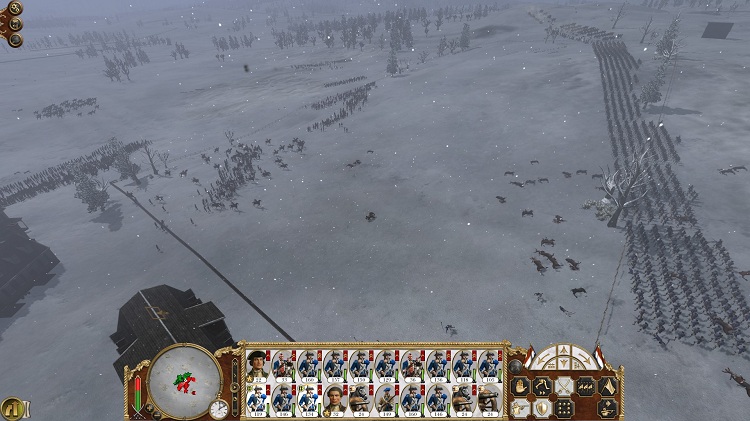
The thick Dutch line in ranks of seven in some places. The British were struggling to get into position quickly while under fire and while crawling up hill.
 Struggling uphill to get into position while under heavy Dutch fire from both cannons and muskets, the British were not long into the fire fight before the Dutch had broken through the British right flank. Despite the loss of their right flank, the Dutch were unable to advance along the left flank due to the dense military fort, giving the British some respite. However, by the time the British lined up, they had been put into a greatly disadvantageous state. After a protracted gunfight, a Dutch downhill charge finished the British off.
Struggling uphill to get into position while under heavy Dutch fire from both cannons and muskets, the British were not long into the fire fight before the Dutch had broken through the British right flank. Despite the loss of their right flank, the Dutch were unable to advance along the left flank due to the dense military fort, giving the British some respite. However, by the time the British lined up, they had been put into a greatly disadvantageous state. After a protracted gunfight, a Dutch downhill charge finished the British off.
A Dutch charge finishes off the British forces.
 With the larger army destroyed, Philadelphia was left nearly completely defenceless with Vrooman taking his army past the battlefield at Virginia without delay or celebration. Caught without their forces in place, Philadelphia quickly fell as well. Stretching North from Philadelphia all the way to Florida, the Dutch were in control of much of North America, and the British were being squeezed into a smaller and smaller enclave sandwiched between multiple possible threats.
With the larger army destroyed, Philadelphia was left nearly completely defenceless with Vrooman taking his army past the battlefield at Virginia without delay or celebration. Caught without their forces in place, Philadelphia quickly fell as well. Stretching North from Philadelphia all the way to Florida, the Dutch were in control of much of North America, and the British were being squeezed into a smaller and smaller enclave sandwiched between multiple possible threats.
The Dutch fighting the tiny Grenadier detachment left to guard Philadelphia.
 To secure this advance, the Dutch had to also advance through Iroquois territory. The small army sent West, bolstered with native irregulars was reinforced by troops fresh out of the conquest of Virginia. Vrooman himself remained in command of the brunt of their forces, as they couldn’t risk diverting many men away from the front at Philadelphia, especially as it was not a fortified city. Still essentially embargoed from any additional reinforcements from Amsterdam, the Dutch in America had to make do with what limited resources they had. Their detachment sent to face the Iroquois even more so.
To secure this advance, the Dutch had to also advance through Iroquois territory. The small army sent West, bolstered with native irregulars was reinforced by troops fresh out of the conquest of Virginia. Vrooman himself remained in command of the brunt of their forces, as they couldn’t risk diverting many men away from the front at Philadelphia, especially as it was not a fortified city. Still essentially embargoed from any additional reinforcements from Amsterdam, the Dutch in America had to make do with what limited resources they had. Their detachment sent to face the Iroquois even more so.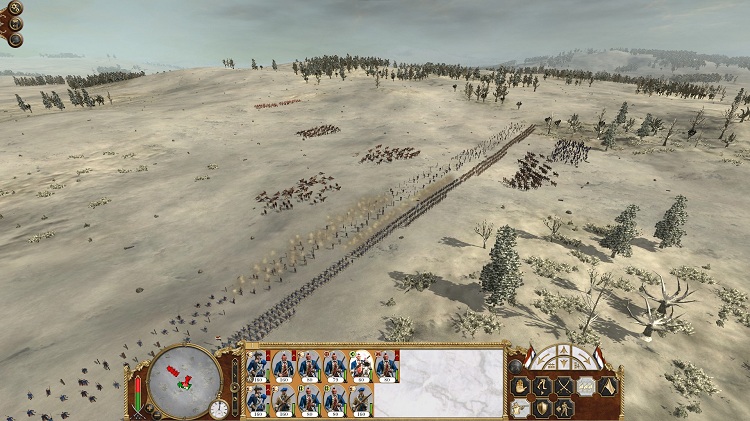
Some Dutch forces in the Americas were primarily Native mercenaries. Unlike the Sepoys in India, they did not take to training to fight in a line, but the Natives were instead deployed as skirmishers.
 The Iroquois were swept from the field over a series of decisive battles, the Dutch absolutely managing to demolish the under-equipped native American defenders treading north to Detroit first and foremost. The furthest Iroquois territory to the west, the conquest of Detroit would put the Dutch along both flanks of their remaining territory. Detroit, essentially undefended fell without incident to the Dutch.
The Iroquois were swept from the field over a series of decisive battles, the Dutch absolutely managing to demolish the under-equipped native American defenders treading north to Detroit first and foremost. The furthest Iroquois territory to the west, the conquest of Detroit would put the Dutch along both flanks of their remaining territory. Detroit, essentially undefended fell without incident to the Dutch.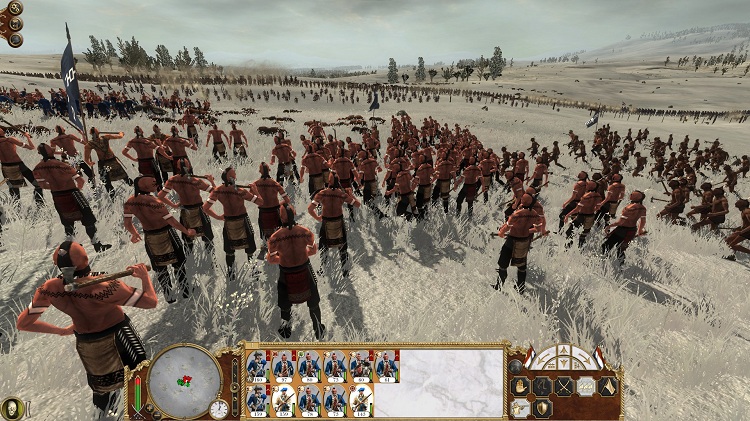
A small native force sent to block Dutch forces heading to Detroit were heaped in piles in the firing range of the Dutch forces, each lay where he fell.
 The low population was sufficiently placated by the Dutch justice ministers that the brunt of their forces could be sent Eastward towards Niagara. On the march towards the border between Dutch and Iroquois territory, these soldiers encountered the first major defensive force of the natives around Jamestown.
The low population was sufficiently placated by the Dutch justice ministers that the brunt of their forces could be sent Eastward towards Niagara. On the march towards the border between Dutch and Iroquois territory, these soldiers encountered the first major defensive force of the natives around Jamestown.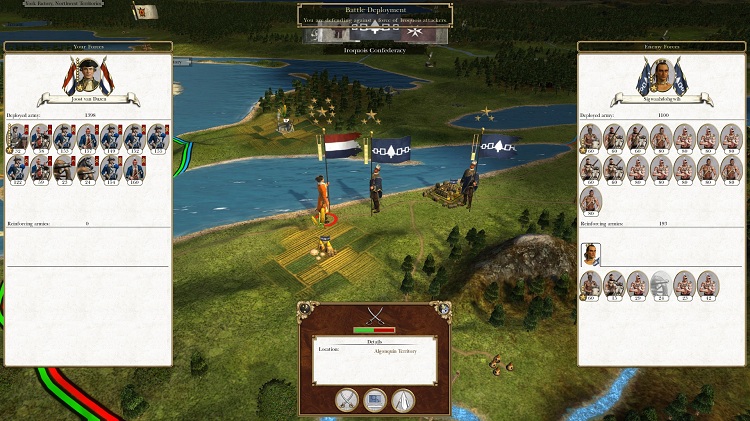
The Dutch fighting the Iroquois, trying to reach their key eastern territories to protect their own western flank along the east coast.
 The battle around Jamestown was a simple massacre. Dutch infantry arranged in line had thinned down the small native force sufficiently for their own native ax men to arrange a counter charge, pushing them off the field, back to their camp in Niagara. This battle was primarily the natives fighting off guard, with Dutch forces attacking them before they could get in position for an ambush, which the Iroquois had wanted to manage. Their small numbers, too small to engage the Dutch directly led them to a crushing defeat.
The battle around Jamestown was a simple massacre. Dutch infantry arranged in line had thinned down the small native force sufficiently for their own native ax men to arrange a counter charge, pushing them off the field, back to their camp in Niagara. This battle was primarily the natives fighting off guard, with Dutch forces attacking them before they could get in position for an ambush, which the Iroquois had wanted to manage. Their small numbers, too small to engage the Dutch directly led them to a crushing defeat.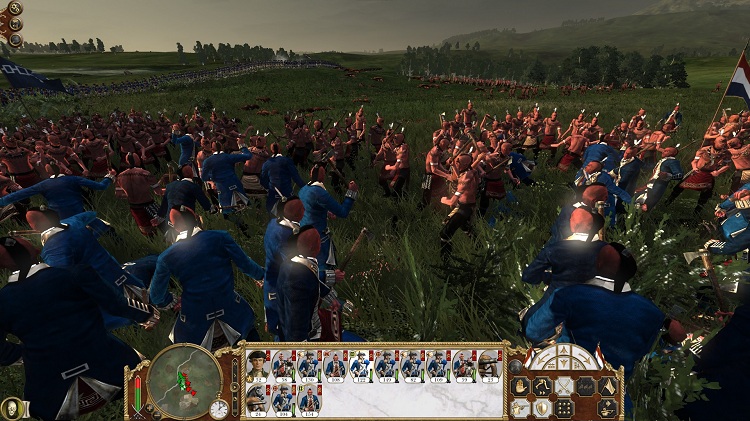
The native Iroquois were pushed back directly by the hail of bullets in many places, but where they weren't, the Dutch aligned natives with their hand axes from South America were there to counter them.
 The Dutch moved briskly to finish them off in Niagara, camping on the high ground over Niagara, while Vrooman attacked Cayuga. The high hill prevented the Natives from charging them simply at night. The Dutch managed to fortify their position around Niagara before the Iroquois managed to send their army forward. Native forces attempted to move as close as possible to the Dutch through forests and warpaths to avoid the terrifying cannon fire of the Dutch, but ultimately decided that they would have to charge up the hill.
The Dutch moved briskly to finish them off in Niagara, camping on the high ground over Niagara, while Vrooman attacked Cayuga. The high hill prevented the Natives from charging them simply at night. The Dutch managed to fortify their position around Niagara before the Iroquois managed to send their army forward. Native forces attempted to move as close as possible to the Dutch through forests and warpaths to avoid the terrifying cannon fire of the Dutch, but ultimately decided that they would have to charge up the hill.
The Dutch assaulting the last of the Iroquois at the same time.
 Dutch cannons fired tremendous volleys at the charging natives who had massed around the center, right at the cannons. These warriors were being torn apart by the dozens by grape and shot, but their mass pressed onward, enough of them surviving to force the cannons into melee, stopping the deadly barrage of shrapnel and lead balls. The general himself was forced to charge down into them to prevent the cannon engineers all being lost and to stop the cannons from being spiked, fighting courageously in hand to hand combat, sword against tomahawks.
Dutch cannons fired tremendous volleys at the charging natives who had massed around the center, right at the cannons. These warriors were being torn apart by the dozens by grape and shot, but their mass pressed onward, enough of them surviving to force the cannons into melee, stopping the deadly barrage of shrapnel and lead balls. The general himself was forced to charge down into them to prevent the cannon engineers all being lost and to stop the cannons from being spiked, fighting courageously in hand to hand combat, sword against tomahawks.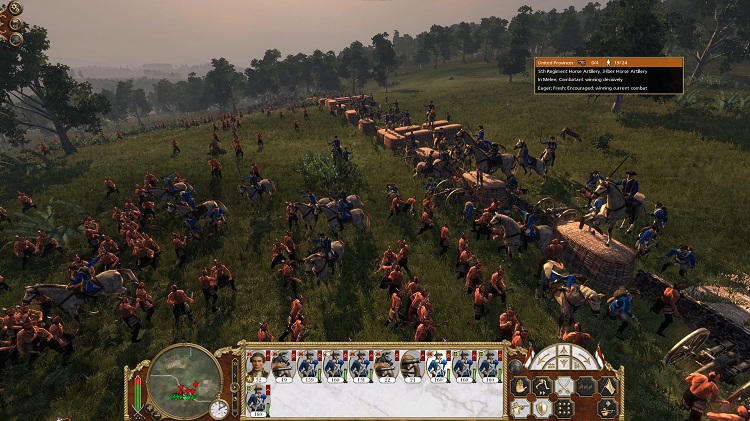
Native braves managed to get a few men into the Dutch cannons, preventing them from firing, but very few survived to arrive at the top of the hill.
 Native braves were able to eventually force their way into melee against the Dutch gun line, their numbers heavily thinned. So many of their men had been killed on the charge that several battalions retreated. The center as well, had been pushed back by the Dutch cavalry push, letting central units in melee push back and destroy the few remaining braves.
Native braves were able to eventually force their way into melee against the Dutch gun line, their numbers heavily thinned. So many of their men had been killed on the charge that several battalions retreated. The center as well, had been pushed back by the Dutch cavalry push, letting central units in melee push back and destroy the few remaining braves.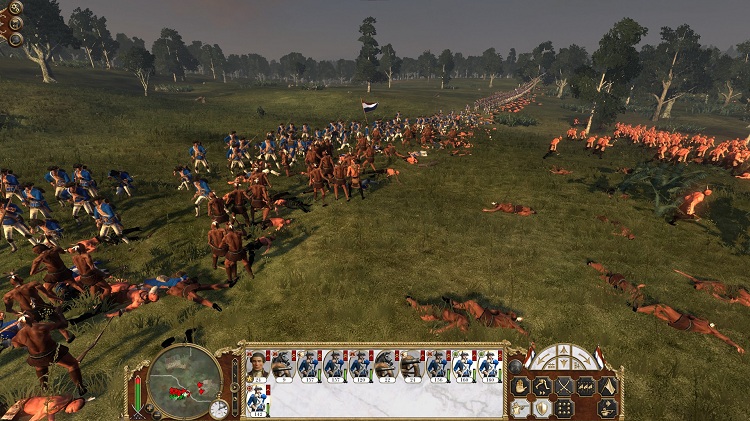
While the Iroquois were able to arrive in melee against the Dutch, they did not do so with enough numbers to overwhelm the defenders, and were destroyed.
 The last of the native forces around Cayuga holed up around their camp where the Dutch had set up trenches and other fortifications to starve them out, but more crucially, lock the Natives away from assisting the British.
The last of the native forces around Cayuga holed up around their camp where the Dutch had set up trenches and other fortifications to starve them out, but more crucially, lock the Natives away from assisting the British.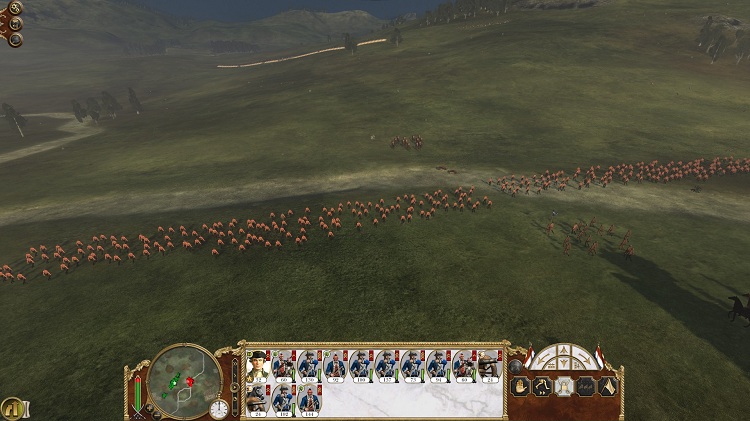
Natives advancing on the Dutch counter defences.
 The natives, unwilling to sit and wait to starve, and having gained wind that the British would not be capable of assisting in time sallied forth towards the fortified Dutch position, but they were so weakened by the previous battle that the Dutch repelled them with no casualties. Lacking the mass to make it to the Dutch lines before shattering, the Iroquois were knocked out of the war by the immensely successful Dutch assault.
The natives, unwilling to sit and wait to starve, and having gained wind that the British would not be capable of assisting in time sallied forth towards the fortified Dutch position, but they were so weakened by the previous battle that the Dutch repelled them with no casualties. Lacking the mass to make it to the Dutch lines before shattering, the Iroquois were knocked out of the war by the immensely successful Dutch assault.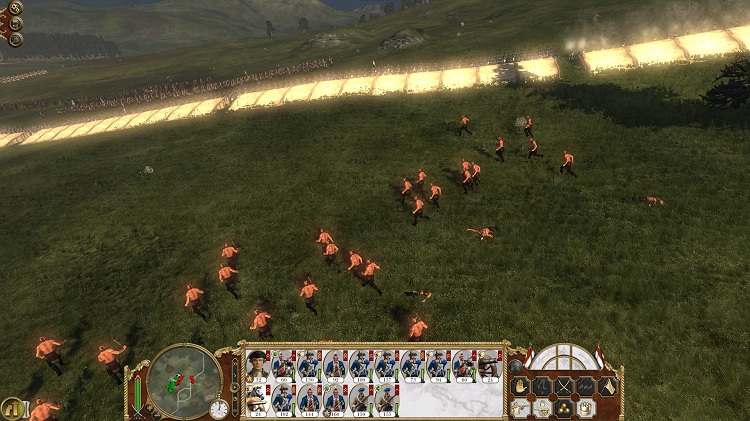
The Dutch shattered the last of the Iroquois with just a few shots. The Iroquois by the final defence did not have enough men to even make the desperate charge into melee.
 This assault had knocked out the last British ally on the continent, and with their own ally to the North, the Dutch were only a few bloody battles away from conquest of North America. Britain, holding on with a few last desperate grasps to their few holds before the inevitable last stand at London had thought only to delay the Dutch forces at America to stop them from moving their army to Europe. Little did they know that the Dutch had actually conquered the Indian sub continent, and that their armies were en route, with over five thousand men.
This assault had knocked out the last British ally on the continent, and with their own ally to the North, the Dutch were only a few bloody battles away from conquest of North America. Britain, holding on with a few last desperate grasps to their few holds before the inevitable last stand at London had thought only to delay the Dutch forces at America to stop them from moving their army to Europe. Little did they know that the Dutch had actually conquered the Indian sub continent, and that their armies were en route, with over five thousand men.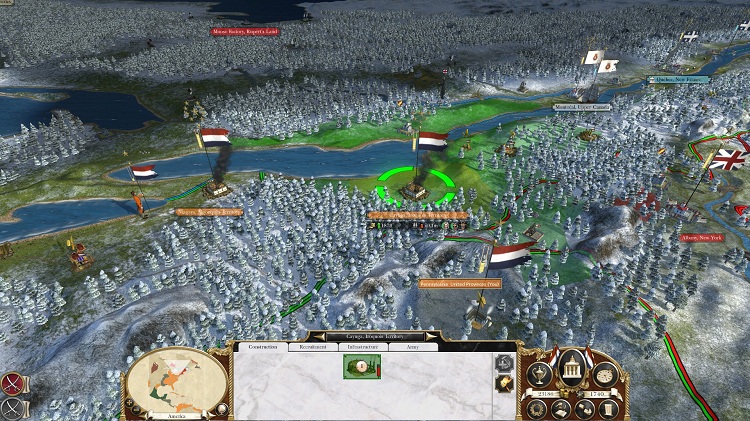
The Dutch occupying the last territory of the former British allies.
 Now, the Dutch had only to pay off the Polish, Italian and Swedish armies from declaring war on them. Millions of guilders were being paid every year to insure peace between them to stop the European theater from reigniting. If the sparks of war ever lit up across Europe before the Dutch had conquered Britain, they would not have the forces remaining to finish the war for decades to come.
Now, the Dutch had only to pay off the Polish, Italian and Swedish armies from declaring war on them. Millions of guilders were being paid every year to insure peace between them to stop the European theater from reigniting. If the sparks of war ever lit up across Europe before the Dutch had conquered Britain, they would not have the forces remaining to finish the war for decades to come. For now however, things were bright for the Dutch. The war had almost drawn to a close, tax revenue was spent across the Empire to produce massive steam powered factories, steam pumped mines, massive industrial scale farms, and mass iron foundries. Even a steam powered dock at La Havre, which could produce massive 120 gun ships was in production. With the additional thousands of men flowing back from India, the Dutch did not need to recruit more men. V.O.C. veterans would be sufficient for the task, and possibly another dozen battalions of two thousand five hundred men after discontent in India had died down.
For now however, things were bright for the Dutch. The war had almost drawn to a close, tax revenue was spent across the Empire to produce massive steam powered factories, steam pumped mines, massive industrial scale farms, and mass iron foundries. Even a steam powered dock at La Havre, which could produce massive 120 gun ships was in production. With the additional thousands of men flowing back from India, the Dutch did not need to recruit more men. V.O.C. veterans would be sufficient for the task, and possibly another dozen battalions of two thousand five hundred men after discontent in India had died down.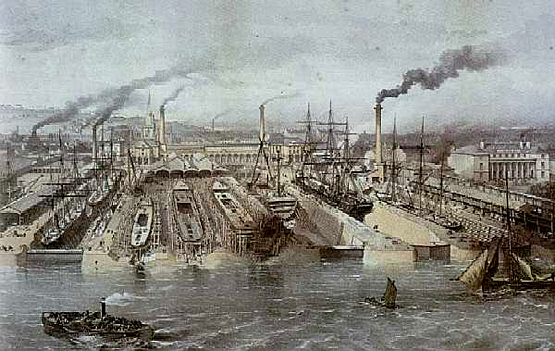
Steam powered docks could produce larger and more powerful ships than former dry docks, and could produce ships during a greater variety of conditions.
Next we will be discussing journalism and its effects on violence, presented by Dr. Rutherford. In half an hour, we will be presenting world news. If you want news of the current war in the Middle East please channel in to BBC radio 1. David Stephenson will be presenting more on the 80 years war in 3 days.